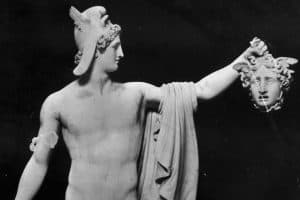Rewritten for easy reading from an original article by Ken Wheeler.
With Socrates’ View in the Phaedo
Introduction
When we talk about ghosts, most people roll their eyes. The word itself has been cheapened by movies, folklore, and campfire stories. It gets tossed in with unicorns and leprechauns — something for children and the superstitious.
But history’s greatest thinkers — Socrates, Plato, Plotinus, and countless others — spoke seriously about the existence of disembodied souls. If the soul is real, why should we dismiss the possibility of its persistence after death?
What follows is a philosophical and logical examination of ghosts. Not through myth, but through the metaphysics of Platonism, Socratic reasoning in the Phaedo, and abductive analysis.
Souls and the Problem of Attachment
In the Phaedo, Socrates explains that when a soul clings too tightly to the body and its desires, it cannot transcend at death. Instead, it remains earthbound.
- [Phaedo 81d]: “These souls wander about until at last, through craving for the corporeal… they are imprisoned once more in a body.”
- [Phaedo 82e]: “An ignorant soul is a helpless prisoner, chained by hand and foot to the body.”
- [Phaedo 81c]: Such souls “hover about tombs and graveyards… the ghosts of those souls which have not gotten clear away.”
In other words, ghosts are not enlightened spirits. They are disembodied wills weighed down by ignorance, attachment, and unfinished desires.
Why Hauntings Happen
A soul is not “in” the body any more than a radio signal is “in” the radio. The body is only a receiver. Denying disembodied spirits while affirming souls is like claiming radio signals vanish when the receiver breaks.
Hauntings arise where attachments are strongest — hospitals, prisons, battlefields, or homes where someone died with heavy regrets. Graveyards, ironically, are rarely active.
Two broad types of hauntings appear:
- Repetitive hauntings — like a skipping record. The spirit is locked in place, unaware of time passing.
- Interactive hauntings — restless souls attempting to engage with the living.
Paranormal Investigation: Feeding the Beast
Modern tools — infrared cameras, recorders, and electromagnetic sensors — have expanded our ability to detect spirit activity. Instead of disproving ghosts, technology has revealed more of them.
But engaging with them carries risk. Paranormal investigators often assume they’re contacting noble souls. In reality, they are interacting with the spiritually ignorant, confused, and deranged. It is no different from socializing with prisoners on death row — no wisdom can come of it.
Cold Spots and Spirit Presence
A classic sign of a ghost is a sudden drop in temperature. Many assume this means spirits “draw energy” from their surroundings. But that’s illogical.
A better explanation is found in physics: the relation of anodes and cathodes. As energy discharges in one place, cooling occurs in another. Ghostly cold spots are not stolen warmth, but the natural presence of disembodied beings manifesting in counterspace.
Why Animals Don’t Haunt
Animals fight fiercely for life, but they lack deep self-identification. They do not cling to personal identity, desires, or unfinished business. This is why even slaughterhouses, despite mass death, are not haunted.
Ghosts require attachment to the self. Without it, there is no restless spirit.
The Philosophical Core
Platonism teaches that matter is only a temporary manifestation, an emanation from the Absolute. Spirit is more fundamental than matter. Just as matter exists on its own, so too does spirit.
Ghosts, however, are not higher beings. They are impure remnants of those who failed to detach from bodily cravings.
- [Phaedo 80e]: A pure soul “carries no contamination of the body” and departs peacefully.
- Ghosts, by contrast, are chained to desire and ignorance.
Closing Thought
Ghosts are not divine messengers or noble guides. They are metaphysical echoes of those who could not let go — restless souls bound by ignorance.
To interact with them is to interact with confusion itself. To transcend them, as Socrates taught, is to purify the soul in life — to detach from bodily cravings and prepare for death not as a terror, but as liberation.
About the Author
Ken Wheeler is a translator of ancient Pali, philosopher, and metaphysician. His work bridges Platonism, early Buddhist thought, and modern investigations into metaphysics and the nature of reality. This essay is adapted from his 2021 treatise The Metaphysics and Logical Philosophy of Ghosts.
Before saving, open your browser’s print dialog and turn off Headers and footers (the title and URL line).
Chrome / Opera / Edge: Menu → Print → uncheck Headers and footers • Firefox: More settings → turn off Print headers and footers • Safari: already clean


